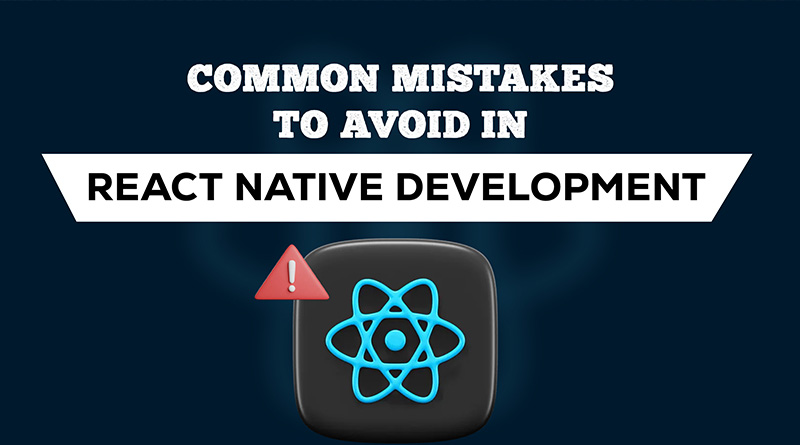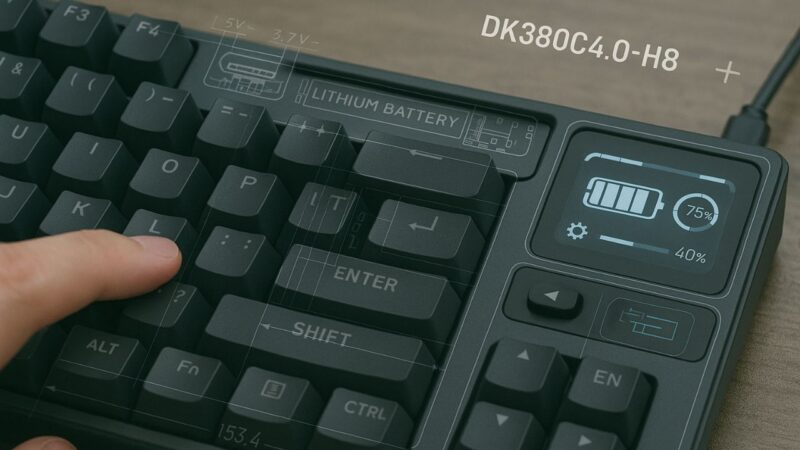Common Mistakes to Avoid in React Native Development

Among the cross-platform app development frameworks, React Native is becoming top choice of developers. It builds mobile apps for both Android and iOS. This framework has been shaping the app development landscape with its advantages.
From faster development to intuitive UI/UX, React Native helps businesses achieve their goals effectively and drive growth. But it also has pitfalls that make developers fall into a trap of mistakes and impact the development process negatively.
It happens because developers make some mistakes while developing apps with React Native. In this blog, we’ll tell you about all these mistakes. After reading this article, you will understand what you should avoid while using React Native for mobile app development. So, let’s get started;
-
Ignoring Platform-Specific Designs
While developing mobile apps with React Native, developers ignore the fact that the design of iOS and Android is not similar at all. Both operating systems and devices are far more different from each other and they have their own guidelines, UI components, and user expectations.
For instance, the Android display isn’t that attractive so users can adjust with a mid-level design. On the other hand, iOS has an attractive display so the design should be appealing and bright. When you fail to address these differences, it can lead to a poor user experience and the app becomes out of place on either one or both platforms.
This mistake can be avoided after studying and implementing platform-specific design guidelines. You can learn Material Design for Android and Human Interface Guidelines for iOS. Using platform-specific components like DatePickerIOS and DatePickerAndroid and implementing responsive designs for different screen sizes and orientations make the app successful.
-
Not Focusing on Performance Optimization
Performance is necessary to attract more users to the application but some developers ignore it. Not focusing on performance is a huge drawback because it leads you to build a slow application with poor user experience.
This happens because developers treat React native apps like web apps. Instead of putting in some time and effort, they assume that the virtual DOM will solve performance problems. Some developers add heavy computations on UI threads, animations, etc which result in degrading the user experience.
You can save yourself from making this mistake with the use of Flatlist or SectionList. Hermes engine is the perfect choice to improve performance on Android devices.
-
Excessive Use of Third-Party Libraries
Libraries are considered crucial to speed up the development process but when you rely totally on them, they can bloat your app and introduce unwanted issues. This is one of the critical mistakes that should be avoided while using react native for mobile app development.
When you include a library in your app, it means that you are increasing the size of the application which results in slowing down the performance and introduces potential security risks.
This mistake can be resolved if you carefully evaluate the need for each library before the integration. Consider the maintenance status, community support, and impact on app size while deciding on the library.
-
Incorrect State Management
State management is a necessary step while building mobile apps using react native. React has a built-in state to manage small applications but as apps grow in complexity, managing state becomes necessary and challenging. When you fail to implement a robust state management solution, it results in hard-to-debug issues, poor app performance, and difficulty in scalability.
You can solve this mistake with the use of state management libraries like Redux, MobX, or React Context API to handle the state. These tools help provide structured ways to manage state across the top react native components. Remember to optimize state updates to improve the performance of the application.
-
Failure To Test the App Across Devices and Screens
Testing is a crucial step that you can’t ignore while building the application. When you reach this step, you understand what’s right and what’s wrong with your app so that you can make improvements.
While developing React Native apps, developers assume that the app can work on any device if it starts working on one device. Ignoring the fact that Android and iOS devices come in various screen sizes, resolutions, and versions results in poor application. It’s important to test the app on both Android and iOS.
This can be solved after testing the application on many devices. You can leverage tools like react-native-device-info to detect screen sizes and adjust layout according to them. Keep these things in mind and ensure a seamless user experience.
-
Avoiding Navigation Considerations
Navigation is an important part of a mobile application. It plays a vital role in making a mobile app seamless. React Native offers several navigation options such as React Navigation and native navigators.
A mistake arises when developers underestimate the complexity of navigation in mobile apps while handling deep links, modals, or stack-based navigation. This mistake leads to performance issues and makes the user experience very bad.
This mistake can be avoided if you choose a navigation library that fits the needs of your app. Implementing a consistent navigation structure and using deep linking can be very helpful. Deep linking is crucial while using react native for mobile app development because it can be used to navigate directly to specific screens.
-
Not Optimizing Images
Optimizing images is necessary to speed up the development process and load times. When you don’t optimize images, you make the app slower because they directly impact the load times and performance. This is one of the most common mistakes but it can be easily avoided with some steps.
You can compress images before bundling them and using appropriate formats such as WebP for better compression is crucial. Use a content delivery network (CDN) for faster image loading and implement lazy loading in long lists.
Final Words
We hope this blog has helped you understand the mistakes and their solutions so that you will not repeat these mistakes and build a next-gen mobile app using React Native. It’s important to avoid common mistakes so that you can save yourself from headaches.
You should be aware of common pitfalls such as failure to test the app across devices, incorrect state management, excessive use of third-party libraries, etc to build a successful app. However, it’s crucial to partner with one of the top react native app development companies to build a next-gen mobile app.







